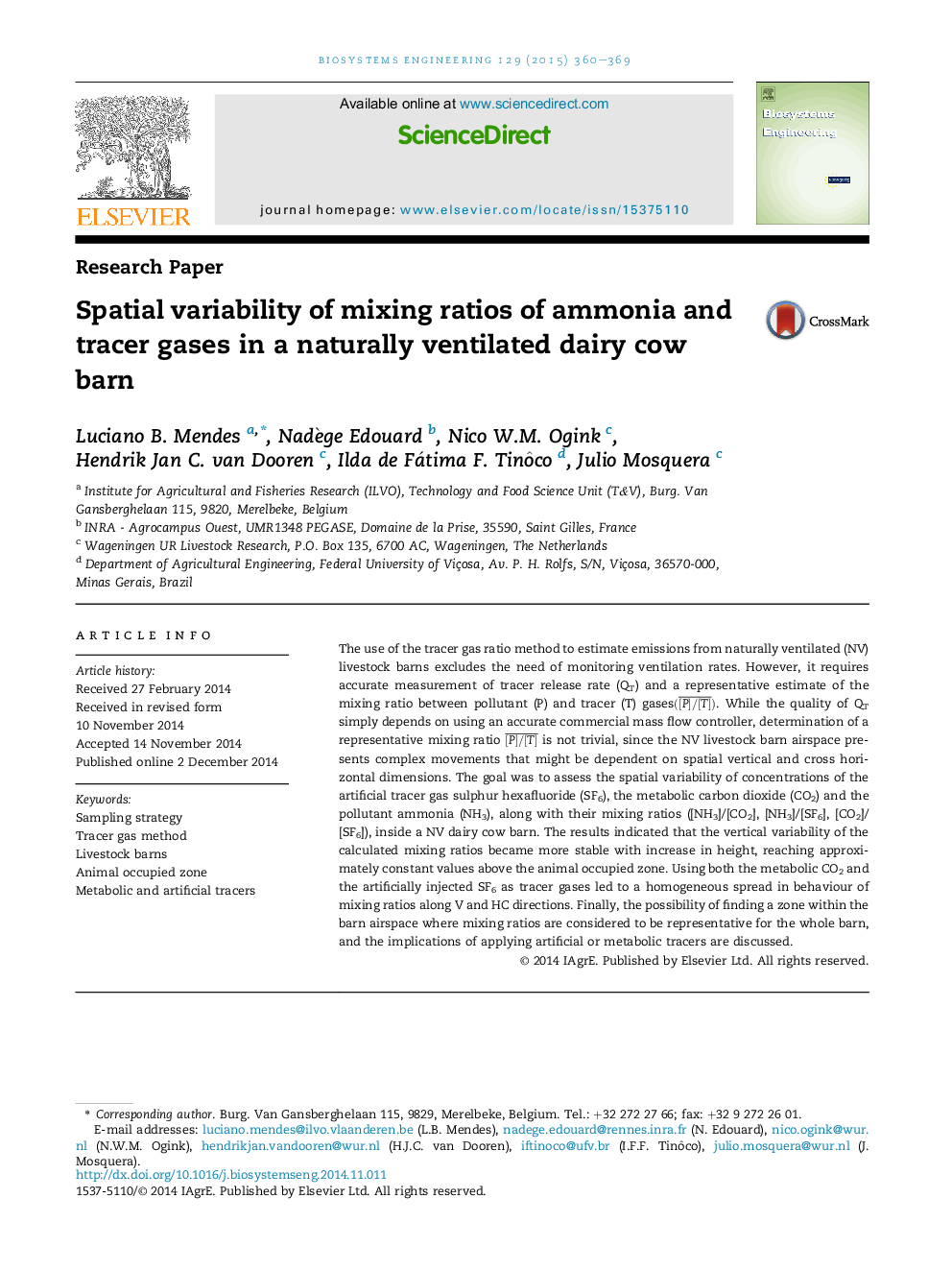| کد مقاله | کد نشریه | سال انتشار | مقاله انگلیسی | نسخه تمام متن |
|---|---|---|---|---|
| 1711079 | 1519532 | 2015 | 10 صفحه PDF | دانلود رایگان |
• Using CO2 or SF6 as tracers gas led to homogeneous mixing ratios across the barn.
• Best region to determine mixing ratios is above the animal occupied zone (AOZ).
• Concentration data in the AOZ is highly uncertain and may not be representative.
• Pollutant and tracer do not need to spread homogeneously for stable mixing ratios.
The use of the tracer gas ratio method to estimate emissions from naturally ventilated (NV) livestock barns excludes the need of monitoring ventilation rates. However, it requires accurate measurement of tracer release rate (QT) and a representative estimate of the mixing ratio between pollutant (P) and tracer (T) gases([P]/[T]¯). While the quality of QT simply depends on using an accurate commercial mass flow controller, determination of a representative mixing ratio [P]/[T]¯ is not trivial, since the NV livestock barn airspace presents complex movements that might be dependent on spatial vertical and cross horizontal dimensions. The goal was to assess the spatial variability of concentrations of the artificial tracer gas sulphur hexafluoride (SF6), the metabolic carbon dioxide (CO2) and the pollutant ammonia (NH3), along with their mixing ratios ([NH3]/[CO2], [NH3]/[SF6], [CO2]/[SF6]), inside a NV dairy cow barn. The results indicated that the vertical variability of the calculated mixing ratios became more stable with increase in height, reaching approximately constant values above the animal occupied zone. Using both the metabolic CO2 and the artificially injected SF6 as tracer gases led to a homogeneous spread in behaviour of mixing ratios along V and HC directions. Finally, the possibility of finding a zone within the barn airspace where mixing ratios are considered to be representative for the whole barn, and the implications of applying artificial or metabolic tracers are discussed.
Journal: Biosystems Engineering - Volume 129, January 2015, Pages 360–369
